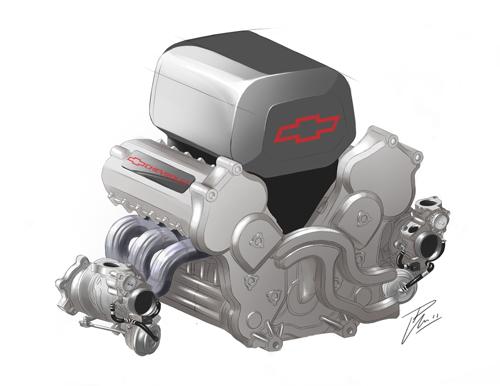Indy Engines Still Pack a 700HP Punch
May 11, 2012

This year, when the Indy cars line up in the grid at the "greatest spectacle in racing," they'll be using engines with less displacement than that in a Volkswagen Golf or a Toyota Camry.
Don't worry, though. Participants in this year's race won't be circling the track at 55mph. The 2.2-liter V-6 engine limitation set forth by the IndyCar rules committee won't stop the vehicles from generating more than 550HP and reaching speeds in excess of 200mph.
[Learn more about the Indy 500 and Littelfuse's Speed2Design site.]
"We have virtually zero latitude with the engines," Mark Johnson, general manager of KV Racing Technology, told Design News. "We take the engines that the suppliers provide, put them in the car, and remove them when it's time." Still, they're able to squeeze every imaginable ounce of performance out of those little race engines, enabling them to produce more horsepower than a Corvette production car engine with three times the displacement.

Indy teams do that by turbocharging their engines and spinning the crankshafts at speeds up to 12,000rpm. The turbocharger boosts the performance by using an exhaust gas turbine to draw more air into the induction system, which, in turn, enables the engine to burn more gasoline.
This year, the IndyCar rules committee will allow three turbocharger sizes, depending on the Indy race course: large oval tracks will be permitted to boost the air induction pressure to 1.3 Bar; smaller ovals will top out 1.4; and road courses will reach 1.55. The 1.3-Bar turbocharger boosts the engine's horsepower to about 550HP, while the 1.55-version stretches the horsepower to about 700HP.
"For every Bar of boost over atmospheric, you're functionally doubling the displacement of the engine," said Russ O'Blenes, manager for racing powertrains at General Motors (GM). "So a 2.2-liter normally aspirated engine with an extra Bar of boost will think it's a 4.4-liter engine."
By boosting engines that already have a relatively short piston stroke, manufacturers can turn the engine's crankshaft faster, which produces more horsepower. This year's engines will operate in a range between 1,000rpm and 12,000rpm.
GM, which produces the Chevy engine employed by KV Racing, is opting this year for twin turbochargers to provide the boost for its engines. The issue of twin- or single-turbocharger design is one of the few areas where engine manufacturers -- including GM, Honda, and Lotus -- are allowed some leeway.
"Each engine manufacturer weighs the pros and cons of twin or single, and then they make their decisions," O'Blenes said.
"The twin weighs a little more and gets packaged on either side of the engine. The single gets packaged behind the engine. Either way, there are packaging and temperature issues that need to be considered. There's also inertia. People will sometimes run twin over single because they're smaller and spool up faster, which reduces turbo lag."
About the Author(s)
You May Also Like
.jpg?width=300&auto=webp&quality=80&disable=upscale)


